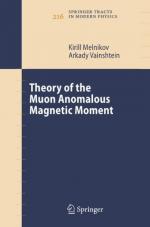|
This section contains 288 words (approx. 1 page at 300 words per page) |
Any current circulating in a planar loop produces a magnetic moment whose magnitude is equal to the product of the current and the area of the loop. When any charged particle is rotating, it behaves like a current loop with a magnetic moment. For a system of charges, the magnetic moment is determined by summing the individual contributions of each charge-mass-radius component.
It turns out that, both classically and quantum mechanically, there is a close connection between a particle's magnetic moment and its angular momentum. (The angular momentum of a particle moving in a circle is equal to the product of the particle's linear momentum and its perpendicular distance from the axis of revolution.) Classically, for the charged particle moving in a circle, the size of the magnetic moment is proportional to the magnitude of the particle's angular momentum. In quantum mechanics, angular momentum is quantized, i.e., it only assumes discrete values instead of the continuous range of possible values predicted by classical theory. A consequence of quantum theory and the quantization of angular momentum is that the magnetic moment also must be quantized.
The magnetic properties of matter can be thought of as arising from microscopic atomic currents that produce magnetic moments in that matter. In paramagnetic materials, permanent magnetic moments arise from the intrinsic angular momentum (spin) of individual electrons. In the absence of an applied magnetic field, these magnetic moments are randomly arranged, and there is no net magnetic moment. An applied magnetic field, however, aligns the moments in the field direction. In diamagnetic materials, all intrinsic magnetic moments are cancelled out by the pairing of electrons. Any remaining magnetic effects in diamagnetic materials are produced by the orbiting electrons.
|
This section contains 288 words (approx. 1 page at 300 words per page) |


